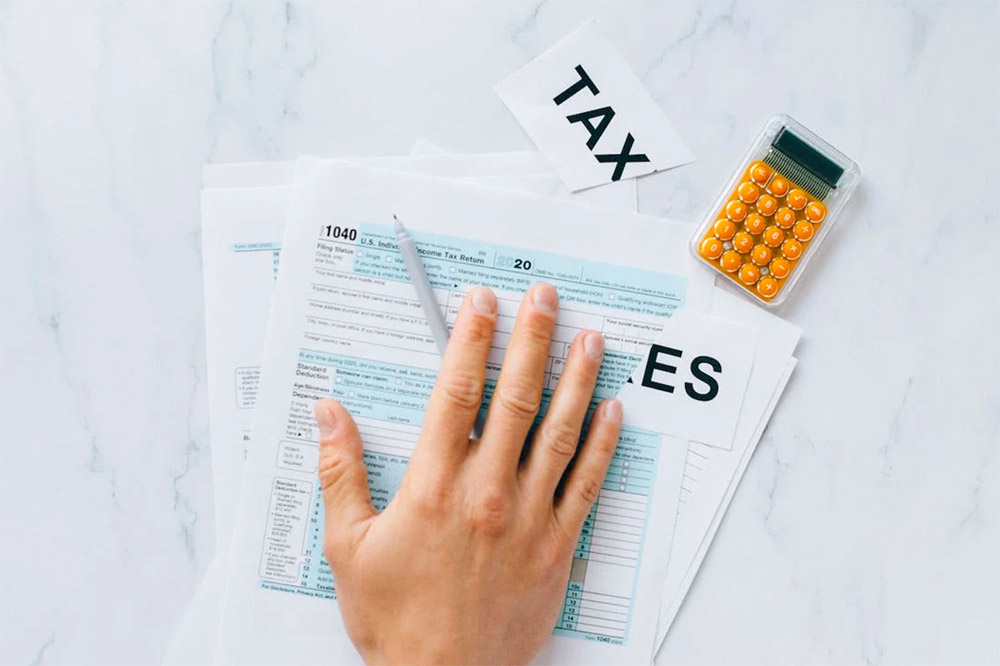
Filing tax returns is a crucial responsibility that, when overlooked, can lead to significant penalties and legal issues. If you find yourself with unfiled tax returns, it’s important to know that there is a way to get yourself back on track!
This article offers a step-by-step guide to help you understand your situation, address any owed taxes, and ultimately, get your financial affairs back on track. Regardless of the reasons behind your unfiled returns, taking action now can restore your peace of mind and prevent further complications.
Not sure where to start with your unfiled tax returns? The professionals at Tax Lifeline are here to help!
Understanding Unfiled Tax Returns
An unfiled tax return occurs when an individual fails to submit their tax paperwork to the IRS by the due date, including extensions. This oversight can happen for various reasons, such as personal or financial hardships, confusion about tax obligations, or simply procrastinating beyond the deadline. The consequences of not filing can be serious, ranging from penalties and interest on the taxes owed to more severe legal actions, including liens against property or even criminal charges in extreme cases.
Recognizing the root causes and potential repercussions of unfiled returns is the first step towards rectifying the situation and avoiding these outcomes.
Step 1: Assess Your Situation
The first step in addressing unfiled tax returns is to thoroughly assess your situation. Begin by gathering all relevant tax documents, financial records, and any previous notices you may have received from the IRS. This collection should include W-2s, 1099s, receipts for deductible expenses, and records of any estimated tax payments made. Organizing these documents by year will help you identify any gaps in your tax filings.
To determine which years have unfiled returns, review your records alongside the IRS notices, if available, or access your tax transcript online through the IRS website. This will provide a clear picture of which tax years require your attention. If you discover that you’re missing documentation, you can request copies from your employer, bank, or the IRS to fill in the blanks. Accurate assessment of your filing status is crucial for taking the correct steps to resolve your unfiled tax returns.
Step 2: Understand Your Tax Obligations
After identifying the years with unfiled returns, the next step is calculating your tax obligations for those years. This includes not only the taxes owed but also any penalties and interest accrued over time. To estimate what you owe, use the IRS Tax Withholding Estimator and other online tools available on the IRS website. These resources can help you approximate your due taxes and understand the potential additional charges. For a more precise calculation, especially in complex cases, consider consulting a tax professional. Understanding the full scope of your tax liabilities is crucial for creating a plan to address your unfiled tax returns.
Step 3: Seek Professional Help (If Needed)
If your tax situation is complex or you’re uncertain about how to proceed with unfiled returns, seeking help from a tax professional like Tax Lifeline can be a great option.Tax advisors, accountants, and enrolled agents are equipped to navigate the intricacies of tax law and IRS procedures.
An enrolled agent or other tax professional can provide expert advice on filing past due returns, negotiating with the IRS, and minimizing penalties and interest. Professional assistance is especially beneficial if you have multiple years of unfiled returns, substantial tax debt, or if you’re facing IRS notices and actions. An expert can help streamline the process, ensuring you make informed decisions and take the most effective steps toward resolving your tax issues.
Step 4: File Your Unfiled Returns
Once you’ve assessed your situation and understand your tax obligations, it’s time to file your unfiled returns. Follow these steps to ensure your filings are accurate and complete:
Identify the Correct Forms: For each unfiled year, you’ll need the specific tax return form for that year. These forms are available on the IRS website.
Gather Documentation: Use your organized tax documents to fill out the forms. If you’re missing documentation, you may request wage and income transcripts from the IRS that summarize employer-reported information.
Complete the Returns: Fill in the forms with your financial information for each respective year. Double-check your work for accuracy.
Submit the Returns: Past due returns must be mailed to the IRS. Electronic filing is not an option for most back taxes. Find the correct mailing address for your location on the IRS website.

Tips for Missing Documentation:
Consider professional help to navigate filing without complete documentation, ensuring your estimates are as accurate as possible.
Filing your unfiled returns can be a significant step towards resolving your tax issues. Taking care to complete each step thoroughly will help streamline the process and minimize further complications.
Step 5: Address Any Tax Debt
After filing your unfiled returns, you may discover that you have some tax debt. It’s crucial to address this promptly to avoid further penalties and interest. Here are your options:
Payment Plans: The IRS offers installment agreements, allowing you to pay your debt over time if you can’t settle the full amount immediately.
Offers in Compromise (OIC): This option lets you settle your tax debt for less than the full amount if you meet specific criteria, demonstrating that paying the full amount would cause financial hardship.
Currently Not Collectible (CNC) Status: If you’re unable to pay due to financial hardship, you may qualify for CNC status. This will enable you to temporarily halt collection efforts.
Acting quickly is essential. The sooner you address your tax debt, the less you’ll accumulate in penalties and interest, reducing your overall financial burden. Explore these options and consider consulting a tax professional to determine the best path forward.
Struggling with tax debt? Check out our article Tax Debt Relief: 5 Tips to Financial Freedom.
Step 6: Stay on Track Moving Forward
Once you’ve addressed your unfiled tax returns, the next step is ensuring you remain compliant in the future. Here are strategies to help you stay on track:
Establish a Filing System: Organize your tax documents and records throughout the year, making it easier to file on time. Digital or physical filing systems can help keep important documents readily accessible.
Adjust Withholdings: If you owed a significant amount or received a large refund, consider adjusting your tax withholdings with your employer. Use the IRS Tax Withholding Estimator to find the right balance.
Make Estimated Tax Payments: If you’re self-employed or have additional income without withholdings, make quarterly estimated tax payments to avoid owing a large sum at year-end.
Regular Check-Ins: Periodically review your tax situation, especially after major life changes (e.g., marriage, divorce, a new job). This helps ensure your withholdings and payments are accurate throughout the year.
Adopting these practices can significantly reduce the risk of future unfiled returns and keep your financial health in good standing. Regular engagement with your tax responsibilities is key to avoiding surprises when tax season arrives.
Navigating Towards Resolution: Your Path Forward
In this article, we’ve outlined a comprehensive path to address and resolve the issue of unfiled tax returns. From assessing your situation and understanding your tax obligations to seeking professional assistance, filing your unfiled returns, addressing any tax debt, and implementing strategies to stay compliant, each step is designed to navigate you towards financial stability and peace of mind.
Remember that while the process may seem daunting, taking action is the first and most crucial step towards resolution. With the right approach and, when needed, the support of tax professionals, overcoming the challenge of unfiled tax returns is entirely achievable.
We encourage you to use this guide as a roadmap to not only address past tax issues but also to secure a compliant and worry-free tax future. If you need help, the enrolled agents at Tax Lifeline are here to help.
Ready to be pulled to safety?
Grab the lifeline and let’s get you the freedom from tax debt you deserve!
Schedule A Consultation


